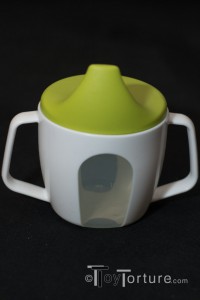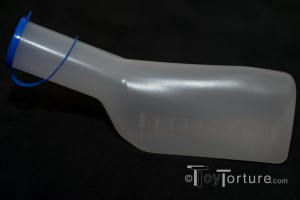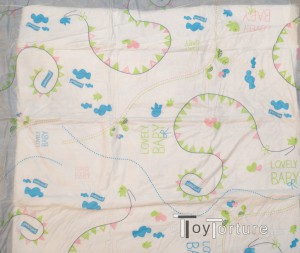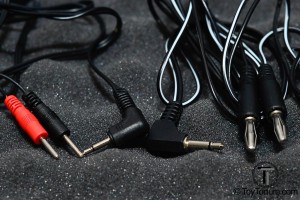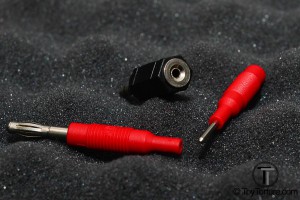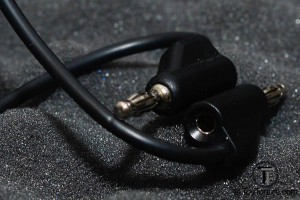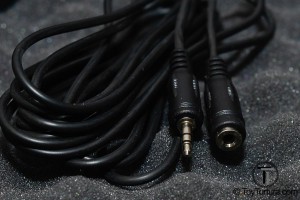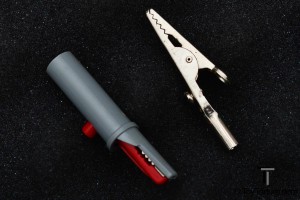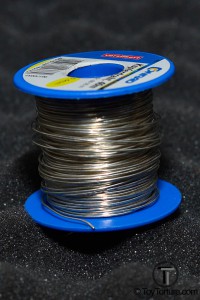About every other week I get a message asking me about different aspects of choosing the right restraints. So in order to get back into writing articles, I condensed the collected answers into this piece. If you feel something is missing or have a recommendation, feel free to send me an e-mail.
Materials
Restraints can be made out of any material that is somewhat soft and can withstand force. Because of that I will only cover the most common ones you will come across in most stores. Some special kind of restraints like Segufix or everything only made out of metal will probably be featured in a future article.
Leather
It is the most common material to make restraints out of. It is very durable if taken correct care off, will withstand force and is soft and gentle to the skin – if you take the right leather. The right leather means a more softer (and mostly thinner) hide on the inside (mostly calf, lamb or fine cow) and a thicker, sturdier hide on the outside (mostly cow, bull, swine, but also kangaroo or buffalo).
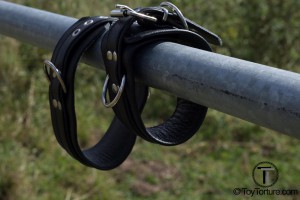
Leather Restraints
I would advise you not to be doing too much of kinky on a budget when purchasing leather restraints. First they are an investment that will stay with you for many years and you will use in almost every scene, secondly in recent years east Asian manufacturers discovered the kink market. Their quality of products ranges from shocking to fairly decent. The biggest issue with any leather toys from Asia are that most hides are treat with chemicals like Chromium to save time and money. You will most likely wear this kind of leather on your bare skin which can lead to allergies. And unlike jeans p.e. you can’t wash restraints 10 times in order to get the chemicals out of there. This will not be the case with every leather toy you will get from East Asia but it is something to keep in mind, especially when you shop around on eBay. I would always recommend investing a few bucks more and support a local dealer who knows where is products come from.
Fabric
Most fabric restraints are made out of nylon but I have seen cotton, canvas and even cevlar ones. They are lighter and smaller than leather restraints and are mostly on the lower end of the price range. This makes them good for starters or if you want to keep a little emergency set in your toy box just in case you forget you bondage bag. Depending on the material they are really easy to clean and disinfect.
Rubber
There are two types of rubber restraints out there: the one made out of soft latex that is also used on fetish wear and thicker, harder rubber (in Germany we call them „old tires“).
As much as I love rubber as a material general speaking but for a few exceptions rubber restraints are not made for hard play. You can restrict movement with them but if someone really struggles or fights against them, they will probably break (I have destroyed three pairs so far in my BDSM career). The thicker rubber ones are able to withstand more force but are also stiffer. You can find them for little money on eBay but most of the time they just cut rubber mats in stripes and added a few metal piece. But due to being stiff the edges are hard and can cause bruises when struggling in them. If you purchase such restraints in a dedicated kink store the edges will most likely be deburred which makes them less harmful but they still won’t be comfortable.
If you want more comfortable rubber restraints go for the latex ones. They are as soft as any rubber attire piece. Sadly the comfort is traded in for durability. The manufacturers try to deal with the issue by putting fabric tape between two layers of latex. I am definitely not the strongest sub in the world and a layer of fabric tape between two layers of 0.9mm of latex didn’t stop me from tearing them apart. I have talked to my local kink master mind at Demask in Dortmund and he told me that Kevlar as a fabric is really the only way to make durable simple rubber restraints. But Kevlar is a difficult material to work with as is rubber and latex overall. Thus the prices for rubber restraints are rather high compared to leather ones. However there is a big benefit with rubber restraints: unlike leather they can get a dirty and wet as you want them to be. So if you want to restrain yourself or your sub in the piss area (or nastier places…), I would advise using rubber or…
Neoprene
There a number of different neoprene variants out there all of which I have seen turned into restraints. Covering every one would be too much for this article so please check at Wikipedia which one works best for you. All kinds of neoprene are sturdier than rubber and can deal with dirty, wetness and can deal fairly well even with oils so they are the material you want to use in a gunge or oil scene.
Construction
Restraints consist of a body and depending on the closing mechanism also a strap.
The body is the part you wrap around the part of the sub’s body you want to restrain.
There are three ways to construct a body:
- One piece non-folded: In this case the body is made out of one piece of sturdy (and hopefully somewhat comfy) leather. When purchasing make sure that the edges are not sharp so there is no injury possibility.
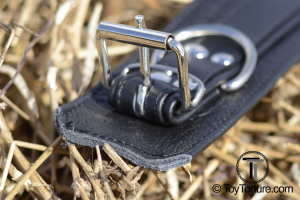
Trice Folded Leahter Restraint
- One piece folded: A folded one piece is made of a single piece of mostly a bit softer leather folded at least once so on one side you have a piping-like edge. The other side can feature a piping which is not really necessary when the leather is soft enough. Because a piping is always thicker than just a fold the restraint might look a bit imbalanced with piping just on one side. You will find a seam around the open side, good folded restraints also have a seam on the fold for added stability.
- Two pieces: Most leather restraints are a two piece construction with stiffer leather on top and softer leather (or fleece, fur, suede etc. as lining) on the inside. Between these layers padding can be added. Padding does not only make restraints more comfortable for long term wearing, they also can create pressure without cutting circulation when you tighten the restraints using a buckle (see below). Since you have two more or less stiff leather edges, good two piece restraints have a piping running around them to make them smoother. The advantage of piping is that it can be made in a different color this bringing a bit more color into your play bag or displaying your hanky.
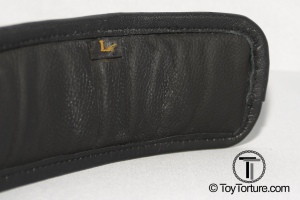
Padding on a Leather Restraint
Straps, buckles, D-rings, etc. are mostly held in place by rivets holding down a leather strap (I have seen them sewed down but I strongly believe that just some thread holding down a d-ring a sub is pulling isn’t a good solution). With every construction but the one piece non-fold it is a personal or design decision if you want the counter part of the rivet touching your skin. Since the rivets are mostly made out of stainless steel there is no medical issue with them touching the skin, but the sensation at least at the beginning is a bit different since they are colder and harder than the surrounding leather. Because of that
most of the time the counterparts are put between two layers of leather or below the padding (a prominent example where it isn’t the case are the Mr S Fetters USA Padded Locking Restraints).
Closing
The most common method to close a restraint is using a strap with different types of clasps:
-
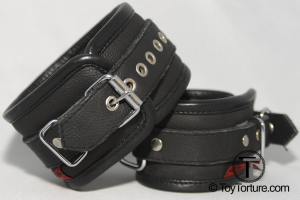
Roller Buckle on a two piece Leather Restraint with Piping
Buckle: Probably the most traditional closing method that works like a belt. Good buckles have a roller buckle which makes pulling the strap through the buckle more easily. The hole spacing determines how accurately you can adjust the restraints. If the strap is made out of more than one piece of leather the holes should be reinforced by metal rings so that the pin won’t accidently harm the edges of the hole. This is not necessary if you use a locking restraints with eyelets because the “pin” is round and smooth (see below).
- Double D-ring: On the end of the strap there are two d-ringthrough which you thread the strap.The advantage of this kind of mechanism is that the restraints can be adjusted steplessly.
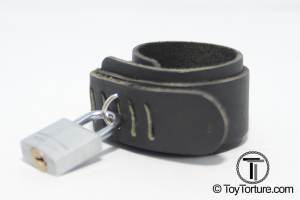
Bail closing with a 20mm padlock
Not a clasp but still requiring a strap are bails. The strap has slots punched into it where you pull the bails through. In order to fix the restraints, you can use a carabiner or a padlock. Since the hole distance is mostly the same than with a buckle strap this kind of restraint is as tight as a buckle one but faster and locking. But you always need some hardware to close it.
If you don’t want to deal with a strap there are some restraints out there using (industry grade) Velcro. The advantage of Velcro is that it is easy to handle, steplessly adjustable and gives especially the newbie a sense of security (if something goes wrong, just pull it open).
Attachment Points
Once you have put the restraints on, you need to attach them to something in order to restrict the restraint person’s movements. I have seen restraints with just a leather loop sewed to the restraints. I am not really convinced that this will work because leather stretches out and as written under construction I don’t trust threads with holding down power subs. In my opinion the only real deal are D-rings. Most of them are made out of metal but I have seen ones made out of plastic. Because nowadays there are some amazing kinds of strong and durable kinds of plastic out there, I can’t really say anything against them. But I haven’t tried them out; if you have experience with restraints with plastic D-rings, please contact me.

D-Ring hold in place by rivets
The majority of metal D-rings are made out of stainless steel so they won’t break – if they are welded. In order to save money I have seen non-welded ones (on the bottom there is a little gap instead of a weldseam). If the force pulling on the D-ring is always directly opposite of the gap, this is no problem. But in most situation the force will pull on one or the other end thus pulling the D-ring open!
Regarding the number of D-rings that is really a personal choice. For “basic” restraints like wrist and ankle one D-ring per restraint is enough, but p.e. for a thigh restraint I would want at least three. General speaking more is better when it comes to the number of D-rings because it gives you more pervy options.
Locking
I know off two ways of building in a locking option into a restraint: the eyelet way and the Mr S way (I call it that way because I have only seen it used on restraints by Mr S). When using the eyelet way there is a small eyelet inside the pin of the buckle where you put a padlock through. The eyelet is usually big enough for a 20mm padlock.

Locking Buckle with Eyelet
The big downside of this method is that through the eyelet the pin gets fairly wide thus the holes in the strap have to be larger and can’t be reinforced by rivets. The last point is only a style thing: there is less metal on the restrains and the belt should be made out of a single piece of thick leather (s.o.). The first point is influencing play because due to the larger holes you can’t close the restraints in as fine pitches as with a normal pin buckle.
Mr S has found a solution for that: they take a normal pin buckle and put a stud with an eyelet behind the buckle. Once you have closed the strap in the buckle you fix the buckle in place over the stud and put a 20mm padlock inside the eyelet. Through this combination you can adjust the restraints finely and still lock it.
Types of restraints
Most people think of the leather cuffs for wrists and ankles when they hear restraints. But there are a lot of other cuffs out there so you can create a Segufix-like full body suspension: Cuffs for thighs, upper arms and belts for chest and hips. And for special purpose´s there are a ton of different special restraints out there like:
This list makes no claim of being complete because there are a lot of pervy minds out there creating new and exciting kink gear every day.
What restraints should I buy?
I have written this article to give a short (and probably incomplete) overview what aspects of a restraint impacts the play so you can make a decision what you want to look for when you shop around for restraints.

Double D-ring
In my opinion even if you are a rope top you should at least have a pair of wrist and ankle restraints just in case you want to quickly suspend someone. If you are a sub you should own the perfect (and perfectly fitting!) restraints you want to have used on you so there is not disappointment when the top wants to restrain you and his don’t fit.
What specific restraints I would recommend really depends on your budget. You can get a pair of high quality leather restraints for around 50€ (like mine from McHurt), if you can deal with the uncertainty of the way the hides have been treated, pick up the ones from The Anubis Pack because you get entire basic set plus thigh restraints and collar for £56.If money isn’t really an issue I would recommend the locking restraints from Fetters USA from Mr S. I brought them over from the US for a friend of mine, they are great manufacturing and leather quality , are locking and have to D-rings, basically anything I would want in a pair of restraints but that comes with a price: $129.95 for the wrist restraints, $139.95 for the ankle restraints. What I would always recommend is going to your local kink store, try them out, get an experts opinion and buy what you feel comfortable with.
If you have any further question, you can always write me an e-mail, send me a tweet @ToyTorture or hit me up on Recon or PlanetRomeo at ToyTorture.



